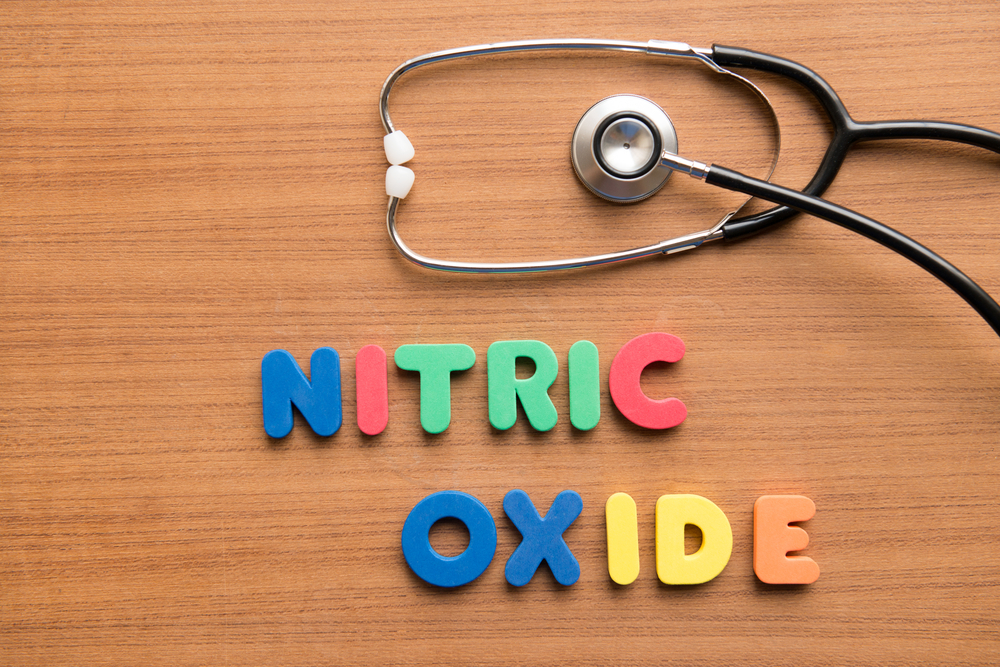All sportsmen and women have experienced the almost orgasmic sensation of muscular congestion during a training session. It is particularly achieved during intense and repeated muscular efforts. In other words, it is your body's reaction to sustained muscle contraction, the blood vessels dilate and the muscles expand.
In the bodybuilding world, congestion, although short-lived, is often associated with muscle growth. In order to make the muscle growth effect last, many sportsmen and women use nitric oxide. This vasodilator does play a role in muscle congestion, but is it as effective as we think?
In reality, the process of muscle congestion is much more complicated than it seems. Obviously, NO (nitric oxide) boosters or other amino acid formulas are involved in muscle building. However, there is also the essential energy provided by ATP and the call for glucose which are also essential elements of muscle congestion. Let's demystify this phenomenon which has been used for years as a marketing argument by the food supplement industry.
The mechanisms involved in muscle congestion
Generally, the phenomenon of muscle congestion appears during a workout or a training session. Does nitric oxide have anything to do with it? In part, yes. But it would be wrong to give it all the credit. Here is a short explanation of the mechanism.
The truth is that everything starts with ATP, the energy source stored in your muscle fibres. During a muscle contraction process, Adenosine Triphosphate releases energy and becomes Adenosine Diphosphate. This incomplete component, lacking phosphate, therefore calls for the production of new ATP stock. The muscles will have to draw the elements it lacks to resynthesise ATP from the interstitial liquid, the liquid in which the cells are bathed.
At the same time, in response to the muscle contraction, your blood vessels dilate and blood rushes to the muscles to provide the necessary nutrients and oxygen. This also causes an overflow of extracellular fluid. There is therefore a pressure difference between the blood vessels and your muscles. This actually produces muscle congestion. Externally, this is similar to a momentary increase in muscle volume.
The more the contractions are repeated, the more the muscles are under tension and create blood flow. In practice, it is then the long series with light loads which make it possible to reach muscular congestion.
Muscle congestion is therefore a complex process which requires the intervention of several elements. First of all, there is the call for glucose caused by the transformation of part of the ATP into energy. Then there is the blood pressure differential in the blood vessels and muscles. And where does nitric oxide fit into all this? Well, it acts on the side, but its role as a vasodilator is quite crucial. Indeed, the more the blood vessels dilate, the greater the pressure and, at the same time, the faster the muscles become congested.
Focus on nitric oxide
Nitric oxide is a gas produced mainly by the endothelium, the inner layer of blood vessels. It is made from arginine, a semi-essential amino acid found in certain foods such as legumes, cereals, red meat, poultry, fish and dairy products.
The health benefits of nitric oxide are numerous, but what interests us most is its effect on muscles. Studies on nitric oxide have shown that it improves muscle velocity and growth through increased blood flow and cell oxygenation.
The level of N. O. in your body, and especially in your muscles, increases naturally when you work out. However, you can still artificially boost nitric oxide production to get muscle congestion. That's why the NO precursors, the amino acids that can be converted into nitric oxide, are the best known volumisers. But it would be an oversimplification to say that you just need to ingest a ton of NO-donating food supplements to get muscle volume.
Do NO boosters work?
Arginine and citrulline are the most common NO donors. So do they alone allow for muscle hypertrophy? Remember that the conversion of these elements into NO requires enzymes called Nitric Oxide Synthase. In addition, biochemical reactions involving several factors are involved in converting these amino acids into nitric oxide.
One should also take into account the physiological differences which mean that the same food supplement can have varied results on each individual. Indeed, according to the phenomenon of homeostasis, there are stable physiological values for each person and the organism tries to find this balance each time there is a disturbing element such as the food supplement. Thus, in some people, NO boosters can actually produce the expected muscle congestion while in others the effect may be limited.


